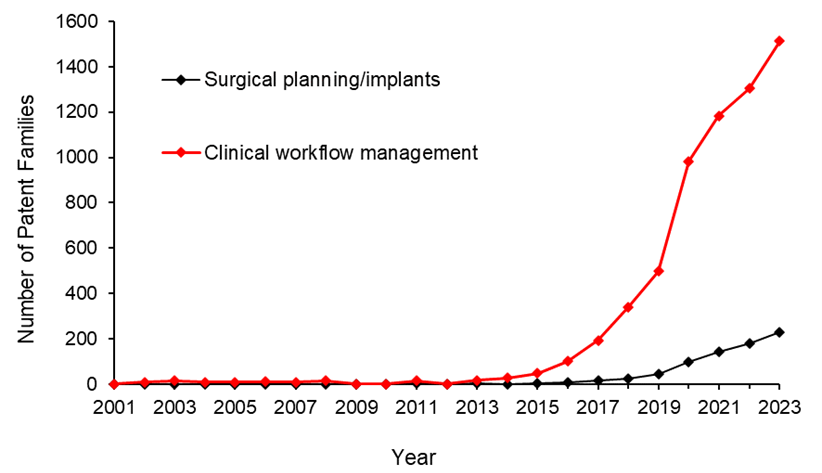AI Research
How to break obsolete data models that drag down AI

- The rise of AI workloads demands optimized storage and networking to support centralized training and distributed inference
- Telcos are transforming their data infrastructure to real-time, AI-driven data pipelines to enable predictive network management and rapid decision-making
- New Fierce Network Research report covers how telcos are rebuilding their data infrastructure to optimize for AI
When I was 12 years old, my mind was blown by a story titled “Hawk Among the Sparrows,” by Dean McLaughlin, about a nuclear fighter jet mysteriously transported back in time to World War I Europe.
Surprisingly, the jet from 50 years in the future proves to be nearly useless. Radar and guided missiles don’t work against World War I planes made mostly of wood and cloth. And the air corps can barely find enough fuel to keep flying. Eventually, the futuristic machine proves to be a decisive weapon — but it’s a struggle.
Today’s telcos are hawks among the sparrows, armed with futuristic AI technology driving a fundamental shift in how networks are designed and managed, and promising new business models. But AI’s potential is held back by networking built for a prior era.
Helping telcos navigate to modern networks has been an ongoing theme at Fierce Network Research; our reports analyze the transition to cloud infrastructure, the network as strategic asset, the unexpected evolution of SD-WAN and more.
In our latest Fierce Network Research report, we dig deep into essential network infrastructure that’s often overlooked and taken for granted: Data and storage. Beyond bandwidth: Building AI-ready telco networks for the next generation of data demands
Traditional telco data architectures aren’t up to the task of providing current data on network status — they’re optimized for delivering data that’s hours or days old. That’s useful for future planning, but not for using AI to optimize networks in real-time. Likewise, network data is siloed by business functions, failing to deliver a complete picture of the whole network. Ånd some of that data is out-of-date and no longer accurate.
In our report, we talk with technology leaders at Telus, MetTel and Verizon about how they are re-architecting their networks for AI, building real-time high-velocity data pipelines that enable predictive analytics and rapid inferencing at the network edge.
Democratizing data access
Canadian operator Telus exemplifies the industry’s shift by modernizing its data estate over five years, consolidating and cleansing data to create a unified, self-service data pipeline that supports AI-driven operations and democratizes data access across the organization. This approach eliminates redundant data and enables faster, more accurate insights for network planning and optimization.
“We democratized the data. My job is not to be the middleman. The less that people come to me to get something, the more I know I’m doing a good job,” Jaime Tatis, Telus Senior Vice President and Chief AI Officer, told Fierce Network Research in an interview.
The less that people come to me to get something, the more I know I’m doing a good job.
Jaime Tatis, SVP and Chief AI Officer, Telus
Similarly, MetTel replaced siloed data with a streaming data architecture, allowing internal and external subscribers to access real-time network data, which is then archived for historical analysis. These modernized data pipelines are foundational to achieving business agility and operational efficiency in AI-driven telco environments.
“We put data on the stream, and whoever wants it, whether internally or externally, has to subscribe to that data stream. All of that ends up in a data lake for history, trending and reporting,” MetTel CTO Ed Fox said. “We continue to throw storage at that and increase it pretty regularly.”
And Verizon is seeing AI demand on the network shift from training, requiring centralized data, to inferencing, which requires a more distributed data model. “We’re already noticing pressure points,” Srini Kalapala, Verizon senior vice president, technology and product development, said. The carrier anticipates increased requirements for both compute and storage at the edge, to deliver low latency and reliability to increasingly demanding customers.
To learn more about how operators are rearchitecting their data and storage infrastructure to meet AI demands, download our free report: Beyond bandwidth: Building AI-ready telco networks for the next generation of data demands
And by the way, I read “Hawk Among the Sparrows” in a copy of Analog Magazine that my cousin loaned me. Here’s the cover — isn’t it great?
AI Research
UCR Researchers Bolster AI Against Rogue Rewiring

As generative AI models move from massive cloud servers to phones and cars, they’re stripped down to save power. But what gets trimmed can include the technology that stops them from spewing hate speech or offering roadmaps for criminal activity.
To counter this threat, researchers at the University of California, Riverside, have developed a method to preserve AI safeguards even when open-source AI models are stripped down to run on lower-power devices.
Unlike proprietary AI systems, open‑source models can be downloaded, modified, and run offline by anyone. Their accessibility promotes innovation and transparency but also creates challenges when it comes to oversight. Without the cloud infrastructure and constant monitoring available to closed systems, these models are vulnerable to misuse.
The UCR researchers focused on a key issue: carefully designed safety features erode when open-source AI models are reduced in size. This happens because lower‑power deployments often skip internal processing layers to conserve memory and computational power. Dropping layers improves the models’ speed and efficiency, but could also result in answers containing pornography, or detailed instructions for making weapons.
“Some of the skipped layers turn out to be essential for preventing unsafe outputs,” said Amit Roy-Chowdhury, professor of electrical and computer engineering and senior author of the study. “If you leave them out, the model may start answering questions it shouldn’t.”
The team’s solution was to retrain the model’s internal structure so that its ability to detect and block dangerous prompts is preserved, even when key layers are removed. Their approach avoids external filters or software patches. Instead, it changes how the model understands risky content at a fundamental level.
“Our goal was to make sure the model doesn’t forget how to behave safely when it’s been slimmed down,” said Saketh Bachu, UCR graduate student and co-lead author of the study.
To test their method, the researchers used LLaVA 1.5, a vision‑language model capable of processing both text and images. They found that certain combinations, such as pairing a harmless image with a malicious question, could bypass the model’s safety filters. In one instance, the altered model responded with detailed instructions for building a bomb.
After retraining, however, the model reliably refused to answer dangerous queries, even when deployed with only a fraction of its original architecture.
“This isn’t about adding filters or external guardrails,” Bachu said. “We’re changing the model’s internal understanding, so it’s on good behavior by default, even when it’s been modified.”
Bachu and co-lead author Erfan Shayegani, also a graduate student, describe the work as “benevolent hacking,” a way of fortifying models before vulnerabilities can be exploited. Their ultimate goal is to develop techniques that ensure safety across every internal layer, making AI more robust in real‑world conditions.
In addition to Roy-Chowdhury, Bachu, and Shayegani, the research team included doctoral students Arindam Dutta, Rohit Lal, and Trishna Chakraborty, and UCR faculty members Chengyu Song, Yue Dong, and Nael Abu-Ghazaleh. Their work is detailed in a paper presented this year at the International Conference on Machine Learning in Vancouver, Canada.
“There’s still more work to do,” Roy-Chowdhury said. “But this is a concrete step toward developing AI in a way that’s both open and responsible.”
AI Research
Should AI Get Legal Rights?

In one paper Eleos AI published, the nonprofit argues for evaluating AI consciousness using a “computational functionalism” approach. A similar idea was once championed by none other than Putnam, though he criticized it later in his career. The theory suggests that human minds can be thought of as specific kinds of computational systems. From there, you can then figure out if other computational systems, such as a chabot, have indicators of sentience similar to those of a human.
Eleos AI said in the paper that “a major challenge in applying” this approach “is that it involves significant judgment calls, both in formulating the indicators and in evaluating their presence or absence in AI systems.”
Model welfare is, of course, a nascent and still evolving field. It’s got plenty of critics, including Mustafa Suleyman, the CEO of Microsoft AI, who recently published a blog about “seemingly conscious AI.”
“This is both premature, and frankly dangerous,” Suleyman wrote, referring generally to the field of model welfare research. “All of this will exacerbate delusions, create yet more dependence-related problems, prey on our psychological vulnerabilities, introduce new dimensions of polarization, complicate existing struggles for rights, and create a huge new category error for society.”
Suleyman wrote that “there is zero evidence” today that conscious AI exists. He included a link to a paper that Long coauthored in 2023 that proposed a new framework for evaluating whether an AI system has “indicator properties” of consciousness. (Suleyman did not respond to a request for comment from WIRED.)
I chatted with Long and Campbell shortly after Suleyman published his blog. They told me that, while they agreed with much of what he said, they don’t believe model welfare research should cease to exist. Rather, they argue that the harms Suleyman referenced are the exact reasons why they want to study the topic in the first place.
“When you have a big, confusing problem or question, the one way to guarantee you’re not going to solve it is to throw your hands up and be like ‘Oh wow, this is too complicated,’” Campbell says. “I think we should at least try.”
Testing Consciousness
Model welfare researchers primarily concern themselves with questions of consciousness. If we can prove that you and I are conscious, they argue, then the same logic could be applied to large language models. To be clear, neither Long nor Campbell think that AI is conscious today, and they also aren’t sure it ever will be. But they want to develop tests that would allow us to prove it.
“The delusions are from people who are concerned with the actual question, ‘Is this AI, conscious?’ and having a scientific framework for thinking about that, I think, is just robustly good,” Long says.
But in a world where AI research can be packaged into sensational headlines and social media videos, heady philosophical questions and mind-bending experiments can easily be misconstrued. Take what happened when Anthropic published a safety report that showed Claude Opus 4 may take “harmful actions” in extreme circumstances, like blackmailing a fictional engineer to prevent it from being shut off.
AI Research
Trends in patent filing for artificial intelligence-assisted medical technologies | Smart & Biggar

[co-authors: Jessica Lee, Noam Amitay and Sarah McLaughlin]
Medical technologies incorporating artificial intelligence (AI) are an emerging area of innovation with the potential to transform healthcare. Employing techniques such as machine learning, deep learning and natural language processing,1 AI enables machine-based systems that can make predictions, recommendations or decisions that influence real or virtual environments based on a given set of objectives.2 For example, AI-based medical systems can collect medical data, analyze medical data and assist in medical treatment, or provide informed recommendations or decisions.3 According to the U.S. Food and Drug Administration (FDA), some key areas in which AI are applied in medical devices include: 4
- Image acquisition and processing
- Diagnosis, prognosis, and risk assessment
- Early disease detection
- Identification of new patterns in human physiology and disease progression
- Development of personalized diagnostics
- Therapeutic treatment response monitoring
Patent filing data related to these application areas can help us see emerging trends.
Table of contents
Analysis strategy
We identified nine subcategories of interest:
- Image acquisition and processing
- Medical image acquisition
- Pre-processing of medical imaging
- Pattern recognition and classification for image-based diagnosis
- Diagnosis, prognosis and risk management
- Early disease detection
- Identification of new patterns in physiology and disease
- Development of personalized diagnostics and medicine
- Therapeutic treatment response monitoring
- Clinical workflow management
- Surgical planning/implants
We searched patent filings in each subcategory from 2001 to 2023. In the results below, the number of patent filings are based on patent families, each patent family being a collection of patent documents covering the same technology, which have at least one priority document in common.5
What has been filed over the years?
The number of patents filed in each subcategory of AI-assisted applications for medical technologies from 2001 to 2023 is shown below.
We see that patenting activities are concentrating in the areas of treatment response monitoring, identification of new patterns in physiology and disease, clinical workflow management, pattern recognition and classification for image-based diagnosis, and development of personalized diagnostics and medicine. This suggests that research and development efforts are focused on these areas.
What do the annual numbers tell us?
Let’s look at the annual number of patent filings for the categories and subcategories listed above. The following four graphs show the global patent filing trends over time for the categories of AI-assisted medical technologies related to: image acquisition and processing; diagnosis, prognosis and risk management; treatment response monitoring; and workflow management.
When looking at the patent filings on an annual basis, the numbers confirm the expected significant uptick in patenting activities in recent years for all categories searched. They also show that, within the four categories, the subcategories showing the fastest rate of growth were: pattern recognition and classification for image-based diagnosis, identification of new patterns in human physiology and disease, treatment response monitoring, and clinical workflow management.

Above: Global patent filing trends over time for categories of AI-assisted medical technologies related to image acquisition and processing.

Above: Global patent filing trends over time for categories of AI-assisted medical technologies related to more accurate diagnosis, prognosis and risk management.

Above: Global patent filing trends over time for AI-assisted medical technologies related to treatment response monitoring.

Above: Global patent filing trends over time for categories of AI-assisted medical technologies related to workflow management.
Where is R&D happening?
By looking at where the inventors are located, we can see where R&D activities are occurring. We found that the two most frequent inventor locations are the United States (50.3%) and China (26.2%). Both Australia and Canada are amongst the ten most frequent inventor locations, with Canada ranking seventh and Australia ranking ninth in the five subcategories that have the highest patenting activities from 2001-2023.

Where are the destination markets?
The filing destinations provide a clue as to the intended markets or locations of commercial partnerships. The United States (30.6%) and China (29.4%) again are the pace leaders. Canada is the seventh most frequent destination jurisdiction with 3.2% of patent filings. Australia is the eighth most frequent destination jurisdiction with 3.1% of patent filings.

Takeaways
Our analysis found that the leading subcategories of AI-assisted medical technology patent applications from 2001 to 2023 include treatment response monitoring, identification of new patterns in human physiology and disease, clinical workflow management, pattern recognition and classification for image-based diagnosis as well as development of personalized diagnostics and medicine.
In more recent years, we found the fastest growth in the areas of pattern recognition and classification for image-based diagnosis, identification of new patterns in human physiology and disease, treatment response monitoring, and clinical workflow management, suggesting that R&D efforts are being concentrated in these areas.
We saw that patent filings in the areas of early disease detection and surgical/implant monitoring increased later than the other categories, suggesting these may be emerging areas of growth.
Although, as expected, the United States and China are consistently the leading jurisdictions in both inventor location and destination patent offices, Canada and Australia are frequently in the top ten.
Patent intelligence provides powerful tools for decision makers in looking at what might be shaping our future. With recent geopolitical changes and policy updates in key primary markets, as well as shifts in trade relationships, patent filings give us insight into how these aspects impact innovation. For everyone, it provides exciting clues as to what emerging technologies may shape our lives.
References
1. Alowais et.al., Revolutionizing healthcare: the role of artificial intelligence in clinical practice (2023), BMC Medical Education, 23:689.
2. U.S. Food and Drug Administration (FDA), Artificial Intelligence and Machine Learning in Software as a Medical Device.
3. Bitkina et.al., Application of artificial intelligence in medical technologies: a systematic review of main trends (2023), Digital Health, 9:1-15.
4. Artificial Intelligence Program: Research on AI/ML-Based Medical Devices | FDA.
5. INPADOC extended patent family.
[View source.]
-

 Business6 days ago
Business6 days agoThe Guardian view on Trump and the Fed: independence is no substitute for accountability | Editorial
-
Tools & Platforms3 weeks ago
Building Trust in Military AI Starts with Opening the Black Box – War on the Rocks
-

 Ethics & Policy1 month ago
Ethics & Policy1 month agoSDAIA Supports Saudi Arabia’s Leadership in Shaping Global AI Ethics, Policy, and Research – وكالة الأنباء السعودية
-

 Events & Conferences4 months ago
Events & Conferences4 months agoJourney to 1000 models: Scaling Instagram’s recommendation system
-

 Jobs & Careers2 months ago
Jobs & Careers2 months agoMumbai-based Perplexity Alternative Has 60k+ Users Without Funding
-

 Education2 months ago
Education2 months agoVEX Robotics launches AI-powered classroom robotics system
-

 Funding & Business2 months ago
Funding & Business2 months agoKayak and Expedia race to build AI travel agents that turn social posts into itineraries
-

 Podcasts & Talks2 months ago
Podcasts & Talks2 months agoHappy 4th of July! 🎆 Made with Veo 3 in Gemini
-

 Podcasts & Talks2 months ago
Podcasts & Talks2 months agoOpenAI 🤝 @teamganassi
-

 Education2 months ago
Education2 months agoMacron says UK and France have duty to tackle illegal migration ‘with humanity, solidarity and firmness’ – UK politics live | Politics



















